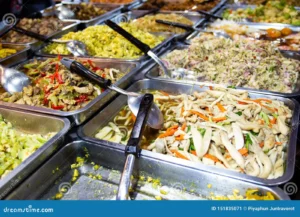Foodborne contamination outbreaks related to melons like cantaloupe are alas not unusual. However, diligent food workers play a key role in prevention through consistently checking temperature of melon pieces.
let’s take a more in depth examine the risks associated with melons and the significance of temperature assessments.

Expertise The Dangers Of Salmonella And Listeria In Melons
Common micro organism that could purpose meals poisoning from melons encompass salmonella and listeria. Salmonella often comes from animal feces and infects the melon all through growing.
It may cause symptoms like diarrhea, fever and stomach cramps within 12-seventy two hours. Listeria is big within the environment and its symptoms like nausea, complications and muscle aches won’t appear till 1-4 weeks later.
Both bacteria easily spread through temperature of melon pieces once cut into. The flesh provides a welcoming environment for their growth.
With surface temperatures ideal for breeding salmonella and listeria, melons can harbor high amounts without appearing spoiled. Yet these bacteria levels may be more than sufficient to overwhelm at risk groups who consume raw melon.

The Importance Of Checking Melon Temperatures
To mitigate these risks, food service workers have a critical role in checking melon temperatures using a food thermometer. Intact (unrefrigerated) melons must remain below 41°F degrees while refrigerated cut melons cannot exceed 45°F.
When checking, workers fully insert the thermometer probe into the thickest part of several melon pieces, holding it in place for at least half a minute to get an accurate reading.
Table 1 shows example log results of checks throughout storage and holding periods.
| Time | Melon Piece | Temperature (°F) |
| 8:00 AM | 1 | 39 |
| 8:00 AM | 2 | 40 |
| 8:00 AM | 3 | 41 |
| 10:00 AM | 1 | 43 |
| 10:00 AM | 2 | 44 |
| 10:00 AM | 3 | 45 |
Any temperature of melon pieces measuring above the safe thresholds must be immediately discarded to prevent contaminated serving. Repeated checks help ensure bacteria do not multiply to dangerous levels unnoticed between initial cutting and consumption.

Actions For Unsafe Temperature Readings
When temperature logs reveal melon pieces measuring above the safety thresholds, those pieces cannot be served. They pose too great a risk for exacerbating a potential foodborne illness outbreak.
All unsafe melons must be disposed of in a manner preventing accidental future consumption, such as sealing in multiple bags before discarding.
Workers should also use the event as a learning experience, questioning what storage or handling factors may have led to the elevated temperatures.
Addressing these issues can help bolster food safety procedures going forward. Additionally, maintaining detailed logs proves the business is taking the risk seriously through close record keeping of their due diligence. These records may also aid health investigators tracing a potential future outbreak.

Frequently Asked Questions
Conclusion Of Temperature Of Melon Pieces
Checking melon temperatures is a straightforward yet impactful step food service workers perform in their important role of shielding customers from preventable illness.
Even with supplier assurance of safety, internal checks provide a valuable fail safe against bacterial contamination proliferating to dangerously high levels prior to consumption.
Making these assessments with a food thermometer part of standard procedures helps maximize protection of public health.











